Modern Luxury Wall Sconces for Your Living Room
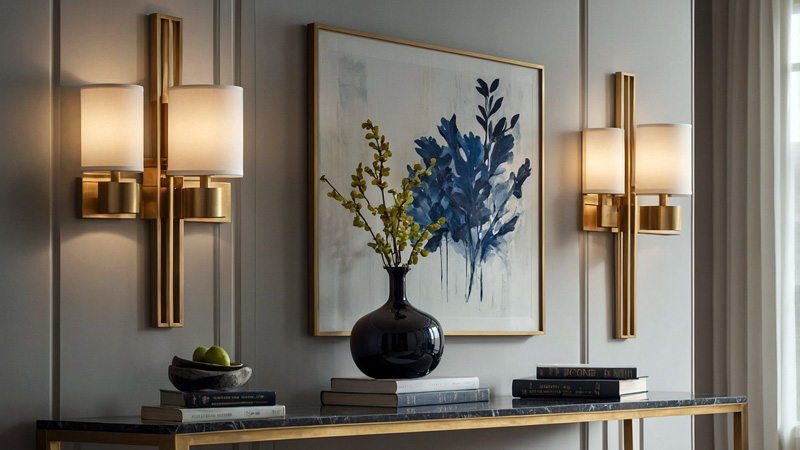
Contents
- Preface
- Overview
- 1. Understand Your Space: The Foundation of Perfect Sconce Selection
- 2. Choose the Right Style: Reflecting Personality and Decor
- 3. Focus on Quality Materials: Beauty That Endures
- 4. Consider the Light Output: Function Meets Feel
- 5. Play with Placement: Turning Walls into Art
- 6. Layer Your Lighting: Creating Depth and Versatility
- 7. Don’t Forget the Dimmer: Control at Your Fingertips
- 8. Think About Energy Efficiency: Luxury Meets Responsibility
- 9. Mix and Match with Other Decor: Creating Cohesion
- 10. Don’t Rush the Decision: Choosing Sconces That Last
- Conclusion
Preface
The living room is more than just a space—it’s the heart of a home, where laughter echoes during gatherings, quiet moments unfold with a book, and memories are woven into daily life. Lighting, often called the “fourth dimension” of interior design, has the power to transform this heart into something extraordinary. Among the many lighting options, modern luxury wall sconces stand out as both functional necessities and artistic statements. They bridge the gap between utility and elegance, turning blank walls into focal points and ordinary evenings into curated experiences.
But selecting the perfect modern luxury wall sconces isn’t a task to be taken lightly. It requires a blend of spatial awareness, design intuition, and practicality. This guide dives deep into every aspect of choosing and integrating these fixtures, ensuring that your living room doesn’t just shine—it resonates with your unique style and needs.
Overview
Modern luxury wall sconces are far more than mere light sources. They are design elements that add depth, character, and sophistication to your living room. Unlike ceiling lights that cast uniform illumination or floor lamps that occupy floor space, sconces 拥抱墙壁 as their canvas, creating layered, directional light that enhances architecture, artwork, and decor.
From sleek minimalist designs to opulent Art Deco pieces, these fixtures come in a myriad of styles, each capable of telling a different story. The key to success lies in understanding your space, aligning the sconce’s style with your decor, prioritizing quality materials, and mastering the art of placement and lighting layering. By the end of this guide, you’ll not only know how to choose the right sconces but also how to make them work in harmony with your living room’s unique personality.
1. Understand Your Space: The Foundation of Perfect Sconce Selection
Before diving into styles or materials, take time to analyze your living room’s unique characteristics. The right sconces should complement, not clash with, the space they inhabit.
1.1 Map Your Room’s Layout
Measure key dimensions: Note wall lengths, ceiling height, and distances between furniture (e.g., sofa to wall, fireplace to adjacent walls). This ensures sconces fit proportionally—oversized sconces in a small room feel overwhelming, while tiny ones in a large space get lost.
Identify architectural features: Highlight focal points like fireplaces, built-in bookshelves, or arched doorways. Sconces can accentuate these features, drawing the eye to what makes your room special.
Assess traffic flow: Avoid placing sconces in high-traffic areas (e.g., near doorways or walkways) where they might be bumped or obstruct movement.
1.2 Evaluate Natural Light Patterns
Track sunlight movement: Observe how light enters your room throughout the day. A north-facing room with soft, diffused light may benefit from brighter sconces, while a south-facing space with harsh afternoon sun might need warmer, dimmable options to balance glare.
Consider window placement: Sconces near windows can create beautiful interplay between natural and artificial light at dusk, but avoid direct glare from sunlight hitting bulb surfaces (opt for frosted glass shades in such areas).
1.3 Define Your Mood Goals
Warm and cozy: Ideal for family nights or relaxation. Pair warm white bulbs (2700K-3000K) with soft, diffused shades (e.g., linen or opal glass) to cast gentle, golden hues.
Bright and energetic: Suits lively gatherings or functional spaces (e.g., a living room used as a home office). Choose cool white bulbs (4000K-5000K) with clear or directional shades to boost alertness.
Dramatic and intimate: Perfect for date nights or quiet evenings. Opt for adjustable sconces with narrow beams to highlight artwork or create pools of light, paired with dimmers for instant mood shifts.
2. Choose the Right Style: Reflecting Personality and Decor
Your sconces should be a natural extension of your living room’s aesthetic. Whether your decor leans traditional or avant-garde, the right style will tie the room together.
2.1 Minimalist: Less is More
Key features: Clean, uncluttered lines, monochromatic color palettes (black, white, gray, or metallic), and compact silhouettes. Shades are often simple cylinders or rectangles, with no unnecessary ornamentation.
Best for: Modern, Scandinavian, or Japandi-style living rooms with neutral walls, streamlined furniture, and a “less is more” philosophy.
Pro tip: Pair with textured elements (e.g., a wool rug or wooden coffee table) to add warmth—minimalist sconces thrive when balanced with organic textures.
2.2 Industrial: Raw and Bold
Key features: Exposed bulbs (Edison-style or filament), metal finishes (brushed steel, matte black, or rusted iron), and utilitarian details (rivets, pipe-inspired arms, or cage shades).
Best for: Lofts, industrial-chic spaces, or rooms with reclaimed wood, leather furniture, or vintage decor.
Pro tip: Mix with soft elements like plush cushions or a woven throw to soften the edginess and avoid a cold, factory-like feel.
2.3 Art Deco: Glamour and Geometry
Key features: Symmetrical geometric shapes (chevrons, sunbursts, or stepped patterns), luxurious materials (polished brass, mirrored glass, or Bakelite), and bold colors (emerald, sapphire, or gold accents).
Best for: Rooms with rich, velvety fabrics, geometric rugs, or statement furniture (e.g., a curved sofa or a marble coffee table).
Pro tip: Use Art Deco sconces as focal points—pair them with simpler decor to prevent the room from feeling overly busy.
2.4 Organic Modern: Nature-Inspired Elegance
Key features: Curved lines, natural materials (sustainable wood, rattan, or hand-blown glass with organic textures), and earthy tones (terracotta, sage green, or warm browns).
Best for: Bohemian, coastal, or biophilic-inspired living rooms with indoor plants, natural fiber rugs, or wooden beams.
Pro tip: Opt for sconces with handcrafted details (e.g., hand-carved wood or irregular glass shapes) to add artisanal charm.
2.5 Transitional: Blending Old and New
Key features: A mix of traditional elements (e.g., curved arms) and modern finishes (e.g., brushed nickel instead of polished brass), with subtle ornamentation (e.g., simple scrolls or frosted glass with etchings).
Best for: Rooms with a mix of styles—say, a mid-century sofa paired with a classic Persian rug.
Pro tip: Transitional sconces work well in open-concept spaces, as they bridge different design zones seamlessly.
3. Focus on Quality Materials: Beauty That Endures
Luxury isn’t just about looks—it’s about longevity. High-quality materials ensure your sconces remain stunning and functional for years, even decades.
3.1 Metals: Timeless and Durable
Brushed brass: Develops a warm, aged patina over time, adding character. Resistant to fingerprints, making it ideal for high-traffic areas.
Polished nickel: Sleek and reflective, with a cool-toned shine. More resistant to corrosion than brass, perfect for humid living rooms (e.g., near windows with condensation).
Matte black steel: Modern and versatile, hiding dust and fingerprints. Pairs well with both light and dark decor.
Care tip: Wipe metal surfaces with a dry microfiber cloth to avoid water spots; for brass, use a brass polish annually to maintain its luster (or embrace the patina for a vintage look).
3.2 Glass: Transparency and Light Play
Hand-blown glass: Unique, with subtle bubbles or swirls that catch and scatter light beautifully. Available in clear, tinted (amber, smoke), or frosted finishes.
Stained glass: Adds color and artistry, perfect for traditional or eclectic living rooms. Choose bold hues (red, blue) for a focal point or soft pastels for a subtle touch.
Tempered glass: Durable and heat-resistant, ideal for sconces with high-wattage bulbs or families with children/pets.
Care tip: Clean glass shades with a mixture of warm water and mild dish soap; avoid abrasive cleaners that scratch the surface.
3.3 Premium Accents: Elevating Luxury
Marble: Adds a touch of opulence with veined patterns (Carrara, Calacatta, or black marble). Often used as bases or backplates for sconces in traditional or contemporary rooms.
Crystal: Sparkles and refracts light, creating a glamorous atmosphere. Perfect for formal living rooms or spaces with chandeliers—crystal sconces can mirror the chandelier’s sparkle.
Leather: Adds warmth and texture, usually as shades or arm wraps. Choose top-grain leather for durability; it develops a rich patina over time.
4. Consider the Light Output: Function Meets Feel
A sconce’s beauty is wasted if its light doesn’t serve the room’s needs. Understanding light output ensures your fixtures are both stunning and practical.
4.1 Brightness: Lumens Over Watts
What to know: Lumens measure brightness (not watts, which measure energy use). For living rooms, aim for 450-800 lumens per sconce for ambient lighting; 800-1200 lumens for task lighting (e.g., near a reading nook).
Example: A pair of sconces flanking a sofa might need 600 lumens each to create a cozy glow, while sconces above a workspace could require 1000 lumens each for clarity.
4.2 Color Temperature: Setting the Tone
Warm white (2700K-3000K): Mimics candlelight or incandescent bulbs, creating a welcoming, relaxing vibe. Best for evening use or rooms with warm decor (beige, terracotta, or wood tones).
Cool white (4000K-5000K): Similar to daylight, boosting focus and energy. Ideal for morning use, modern rooms with cool tones (gray, blue, or white), or spaces used for work.
Pro tip: Avoid mixing color temperatures in the same area—warm and cool light clashing can make the room feel disjointed.
4.3 Light Direction: Controlling the Glow
Upward lighting: Bounces light off the ceiling, creating soft ambient light. Great for small rooms, as it makes ceilings feel higher.
Downward lighting: Directs light to specific areas (e.g., a coffee table or artwork). Perfect for task lighting or highlighting decor.
Both directions (up/down): Offers versatility—use upward for ambient light and downward for focused illumination. Ideal for living rooms with multiple functions.
4.4 Beam Angle: Narrow vs. Wide
Narrow beam (15°-30°): Concentrates light on a small area (e.g., a painting or sculpture). Use as accent lighting to draw attention to focal points.
Wide beam (60°-90°): Spreads light over a larger area, making it great for ambient or general lighting. Perfect for lighting a seating area or an empty wall.
5. Play with Placement: Turning Walls into Art
Where you install your sconces can transform them from mere fixtures into design stars. Strategic placement enhances symmetry, highlights features, and maximizes functionality.
5.1 Symmetrical Placement: Balance and Harmony
Flanking a mirror or artwork: Install sconces 6-12 inches from the edge of the mirror/artwork, at eye level (60-66 inches from the floor). This creates a balanced frame, making the piece feel intentional and grand.
On either side of a fireplace: Position sconces 12-18 inches from the fireplace opening, aligning the center of the sconce with the top of the fireplace mantel. This adds warmth to the focal point and reduces shadowing on the mantel decor.
5.2 Asymmetrical Placement: Creative and Dynamic
Above a single sofa arm: Install one sconce 12 inches above the sofa back, angled slightly downward to light the seating area. Pair with a floor lamp on the opposite side for balance.
In a corner: Mount sconces high in a corner (72-84 inches from the floor) to bounce light off two walls, brightening dark corners and adding depth. Ideal for large living rooms with unused corners.
5.3 Functional Placement: Serving the Room’s Needs
Near a reading nook: Position the sconce 42-48 inches from the floor, angled toward the seating area, so light falls directly on the book (not in the reader’s eyes). Choose adjustable arms for customization.
Along a hallway or entry adjacent to the living room: Install sconces every 6-8 feet to guide movement and create a welcoming transition. Match their style to the living room sconces for cohesion.
5.4 Pro Tips for Installation
Height matters: Most sconces look best 60-66 inches from the floor (eye level for the average adult). Adjust for tall ceilings—add 3-6 inches for every foot above 8 feet.
Spacing: For multiple sconces, keep 24-36 inches between them to avoid a cluttered look.
Wiring: If your walls aren’t pre-wired, opt for plug-in sconces with cord covers (painted to match the wall) or battery-operated options (ideal for renters).
6. Layer Your Lighting: Creating Depth and Versatility
No single light source can do it all. Layering ambient, task, and accent lighting ensures your living room is functional at every hour and for every occasion.
6.1 Ambient Lighting: The Foundation
What it does: Provides overall illumination, making the room feel bright and open.
Sconce role: Upward-facing sconces work with ceiling lights (chandeliers, recessed lights) to fill the room with soft, indirect light. In rooms without ceiling fixtures, a pair of large up/down sconces can serve as primary ambient lighting.
Example: A living room with recessed lights (ambient) paired with upward-facing sconces to soften harsh shadows from the recessed bulbs.
6.2 Task Lighting: Focused Function
What it does: Illuminates specific activities (reading, working, or playing games).
Sconce role: Downward-facing or adjustable sconces target work zones, reducing eye strain. They’re more space-efficient than table lamps, freeing up surface area.
Example: A sconce with a swing arm above a sofa, paired with a floor lamp near a desk in the living room, ensures both seating and work areas are well-lit.
6.3 Accent Lighting: Highlighting Beauty
What it does: Draws attention to decor, architecture, or art, adding drama and personality.
Sconce role: Narrow-beam or directional sconces spotlight paintings, sculptures, or architectural details (e.g., a exposed brick wall).
Example: Small, adjustable sconces mounted 6-12 inches above a gallery wall, angled to highlight each piece without creating glare.
6.4 Balancing the Layers
Daytime: Use ambient lighting (natural light + ceiling lights) and minimal sconce use (task lighting only if needed).
Evening: Dim ambient lights, turn on sconces for warmth, and add accent lighting to highlight decor.
Night: Use only a few sconces (with dimmers) for soft, safe navigation without harsh brightness.
Common mistake: Over-reliance on overhead lights—this creates flat, shadowy lighting. Sconces add depth by lighting walls and surfaces, making the room feel larger.
7. Don’t Forget the Dimmer: Control at Your Fingertips
A dimmer switch is the unsung hero of luxury lighting. It turns static sconces into versatile tools that adapt to your mood, time of day, and activity.
7.1 Types of Dimmers
Knob or slider dimmers: Classic, affordable, and easy to use. Ideal for traditional or minimalist living rooms.
Touch dimmers: Sleek and modern, with a simple tap to adjust brightness. Perfect for contemporary spaces with a focus on clean lines.
Smart dimmers: Controlled via smartphone apps, voice commands (Alexa, Google Home), or schedules. Some even sync with sunrise/sunset, adjusting brightness automatically. Great for tech-savvy homeowners or those who love convenience.
7.2 Benefits Beyond Ambiance
Energy savings: Dimming lights by 50% can reduce energy use by up to 40%, lowering utility bills.
Longer bulb life: Dimmer bulbs last 2-4 times longer than bulbs at full brightness—LEDs, in particular, thrive with dimming.
Versatility for occasions: Bright for game nights, dim for movie nights, and somewhere in between for dinner parties.
7.3 Installation Tips
Check compatibility: Not all dimmers work with LED bulbs—look for “LED-compatible” dimmers to avoid flickering or buzzing.
Hire a pro: For hardwired sconces, electricians can ensure the dimmer is properly wired to avoid overheating.
Smart systems: Pair with smart bulbs (e.g., Philips Hue) for endless customization—set “movie mode” or “morning mode” with a single tap.
8. Think About Energy Efficiency: Luxury Meets Responsibility
Eco-friendly lighting doesn’t mean sacrificing style. Modern luxury sconces can be both beautiful and kind to the planet—plus, they save you money in the long run.
8.1 LED Bulbs: The Gold Standard
Why choose them: Use 75% less energy than incandescent bulbs and last 25 times longer (up to 25,000 hours). Available in warm/cool tones, dimmable options, and even “vintage” filament styles for industrial or retro sconces.
Types to consider:
A19 LEDs: Standard shape, fit most sconce shades.
Candelabra LEDs: Smaller base, perfect for chandelier-style sconces.
Smart LEDs: Adjust color temperature or brightness via app, with features like motion sensing (turn on when you enter the room).
8.2 Beyond Bulbs: Efficient Fixture Design
Heat dissipation: Sconces with metal housings or ventilation slots prevent overheating, which can reduce bulb efficiency and lifespan.
Reflective materials: Fixtures with mirrored or metallic interiors bounce light more effectively, requiring lower-wattage bulbs to achieve the same brightness.
8.3 Certifications and Labels
ENERGY STAR: Fixtures or bulbs with this label meet strict efficiency standards, ensuring they use at least 75% less energy than non-certified options.
LM-80: A certification for LED bulbs, guaranteeing consistent performance over time (no significant dimming for 6,000+ hours).
8.4 Calculating Long-Term Savings
Example: A 10W LED bulb (equivalent to a 60W incandescent) costs 1.20/year to run (based on 3 hours/day). Over 25,000 hours (23 years), that’s 27.60—vs. $165 for incandescent bulbs (changed every 1,000 hours). Add in the cost of the sconce, and energy-efficient options pay for themselves quickly.
9. Mix and Match with Other Decor: Creating Cohesion
Your sconces should talk to the rest of your living room decor, creating a story that feels intentional. Here’s how to blend them seamlessly.
9.1 Color Coordination
Match metals: If your coffee table has brass legs, choose brass sconces. For mixed metals (e.g., nickel hardware and a brass mirror), pick sconces with one of the metals to tie them together.
Contrast with walls: Dark sconces pop against light walls (e.g., black sconces on white drywall), while light sconces soften dark walls (e.g., white sconces on charcoal paint).
Accent colors: Use sconces to echo a room’s accent color—e.g., teal glass shades to match throw pillows, or red leather wraps to complement a rug’s red undertones.
9.2 Texture Play
Pair opposites: Smooth, glossy sconces (e.g., polished nickel with glass shades) balance rough textures (e.g., a shaggy rug or a stone fireplace).
Layer similar textures: Matte metal sconces with woven shades harmonize with a linen sofa and jute rug, creating a cozy, tactile vibe.
9.3 Style Mixing: Rules to Follow
Stick to one dominant style: Let 70% of your decor (including sconces) follow a main style (e.g., modern), then add 30% from another style (e.g., bohemian) for interest. For example, minimalist sconces with a macramé wall hanging.
Repeat motifs: If your sconces have geometric shapes, echo that with a geometric rug or throw pillows to create cohesion.
9.4 Seasonal and Occasional Updates
Holiday decor: Wrap string lights around sconce arms during Christmas, or add small pumpkin accents for Halloween—keep the sconce itself as a constant.
Seasonal shades: Swap out fabric shades seasonally (linen for summer, velvet for winter) to refresh the room without changing the fixture.
10. Don’t Rush the Decision: Choosing Sconces That Last
Luxury is an investment, and rushing can lead to regret. Take your time to find sconces that feel right for your space, style, and lifestyle.
10.1 Do Your Research
Browse showrooms: See sconces in person to assess size, finish, and light quality—photos can be misleading.
Read reviews: Look for comments on durability (“Does the finish scratch easily?”) and light output (“Is it as bright as described?”).
Check return policies: Many high-end retailers offer 30-day returns—useful if the sconces don’t look right in your home.
10.2 Test Before Committing
Rent or borrow: Some lighting stores rent sample fixtures—test them in your living room for a few days to see how they look in morning, afternoon, and evening light.
Create mockups: Cut out paper shapes the size of your desired sconces and tape them to the wall to visualize proportions.
10.3 Budget Wisely
Prioritize key pieces: Splurge on sconces that will be focal points (e.g., those flanking your main artwork) and save on secondary ones (e.g., corner sconces).
Consider resale value: Classic styles (e.g., brass Art Deco or minimalist black) tend to appeal to more buyers if you plan to sell your home.
10.4 Trust Your Gut
If a sconce makes you smile every time you imagine it in your room, it’s probably the right choice—even if it breaks “the rules.” Your living room should reflect you, not just design trends.
Conclusion
Modern luxury wall sconces are more than lighting—they’re storytellers, mood setters, and design anchors. By understanding your space, choosing the right style and materials, and mastering placement and lighting layering, you’ll transform your living room into a space that’s both luxurious and livable.
Whether you opt for minimalist brass sconces, industrial iron fixtures, or Art Deco crystal pieces, the key is to select fixtures that resonate with your personality and enhance your daily life. Take your time, trust your instincts, and let your sconces shine—literally and figuratively.
Your living room deserves to be a place you love coming home to, and with the right modern luxury wall sconces, it will be.


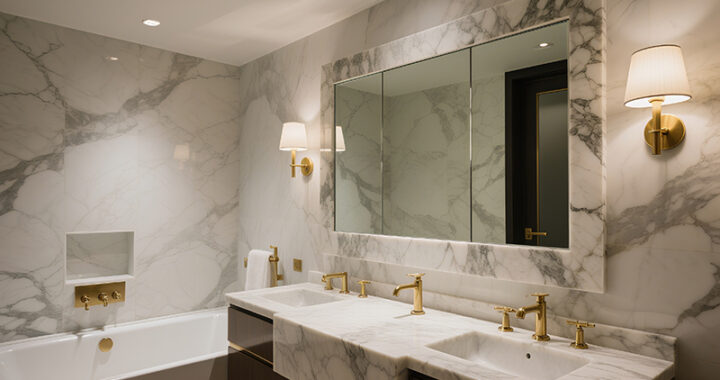 Best Luxury Bathroom Mirrors for a Stylish Touch
Best Luxury Bathroom Mirrors for a Stylish Touch 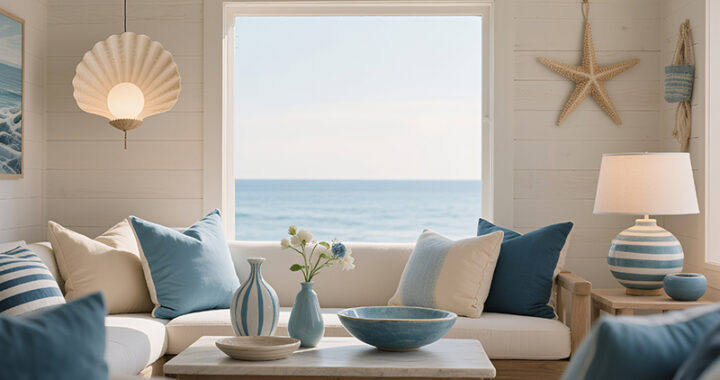 Luxury Coastal Home Decor Ideas: Elevate Your Beach House with Timeless Elegance
Luxury Coastal Home Decor Ideas: Elevate Your Beach House with Timeless Elegance 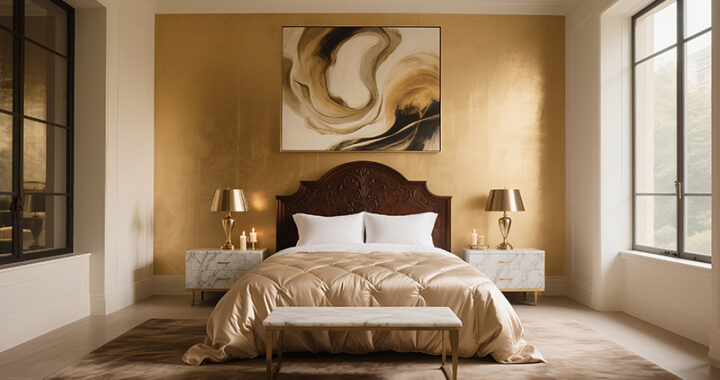 Home Decor Ideas to Make Your Home Feel Like a Luxury Hotel
Home Decor Ideas to Make Your Home Feel Like a Luxury Hotel 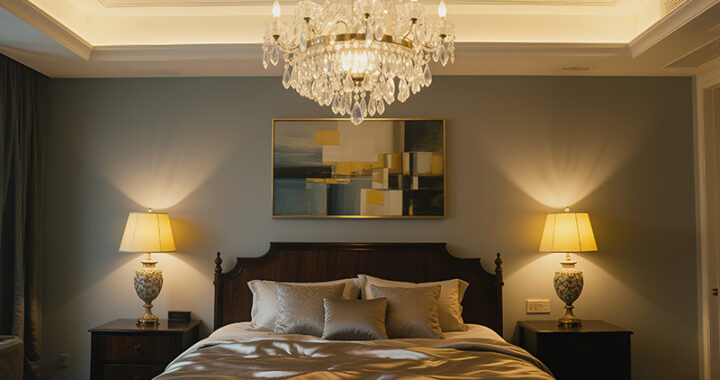 Best Luxury Accent Lighting for Every Room
Best Luxury Accent Lighting for Every Room 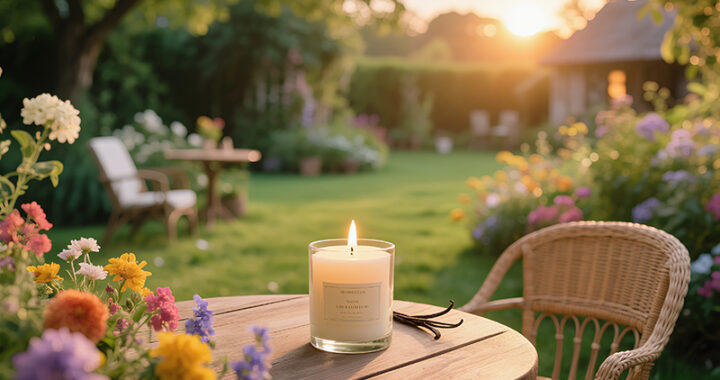 Best Luxury Candles for a Cozy and Elegant Home
Best Luxury Candles for a Cozy and Elegant Home 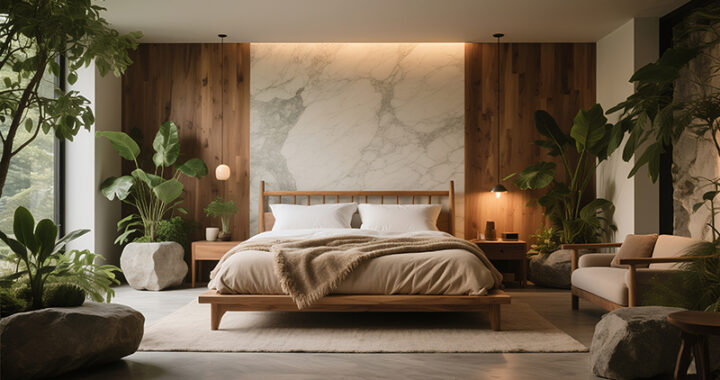 Best Luxury Bed Frames for a Stylish Bedroom
Best Luxury Bed Frames for a Stylish Bedroom